23 Jun 1861 – 2 Jan 1919
Granddaughter of Philip Cardon and Martha Marie Tourn
Daughter of Jean Paul Cardon and Susannah Goudin
My Mother, Susette Cardon, 1861-1919
by Irene Bastow
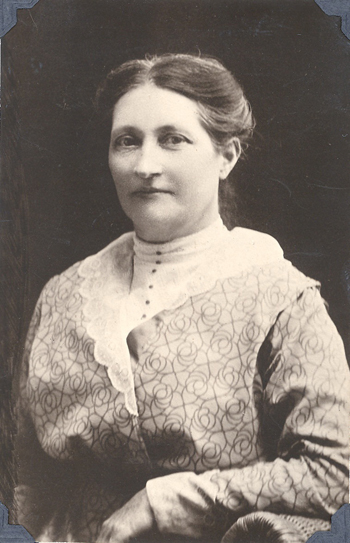
Susette Cardon, was the third child of Susanna Goudin and John Paul Cardon, born June 23, 1861 in Logan, Utah. She was a sensitive, sweet, unassuming girl, loved by all who knew her throughout her life.
The Cardon and Goudin families were French Hugenots from the valleys of the Alps in Northern Italy, where they had taken refuge from prolonged persecutions. This group of people were known as “Vaudois” or “Waldenses.” They heard the gospel of Jesus Christ through the inspiration of Apostle Lorenzo Snow in believing that: “The Lord had there in the Valleys of Piedmont a people hidden up amid the alpine mountains, and it is the voice of the spirit that I shall commence something of importance in that part of this dark nation.” (Biography of Lorenzo Snow)
From the time Susette was a small girl, she never remembered going out to be with other children without a stocking to knit on for the family. Susette had little schooling, just a few years. There was a school in Logan the first year, Lindquist Hall, on the southeast corner of 2nd North and 1st East, with Joseph Hyde and William H. Apperlie as teachers. It was hard at first and took some urging by the leaders for pioneers to send their children to school. There were many tasks for all to do to survive. To carry water from the river at first, gather wood, care for smaller children, animals or helping in the home or fields. At first, parents had to be willing to make the sacrifice for the privilege of learning. Susette gathered leaves for the silk worms to feed on which consumed large amounts. The Cardons planted the first mulberry trees in Logan.
The Cardon family came to this country in 1854. They crossed the plains in the Robert Campbell Company arriving in Salt Lake City, October 29, 1854. Susannah Goudin came two years later in the first handcart company, under Edmund Elsworth, arriving in Salt Lake City September 26, 1856. Susanna came as a member of the Peter Staley family and walked the entire distance pulling a handcart. Peter Staley died of starvation on the way leaving a wife, cousin of Susanna, and her three children. My grandmother was listed thus: Peter Staley (48), wife Marie (45) Children – Susanna (19) Goudin, Bartholomey (16), Marie (11), Margareta (3). Mrs. Barker (mother of James L. Barker) recorded this information.
Pioneer life was very hard. Grandmother Susanna had been an expert in the art of silk culture. So she raised flax and spun and wove cloth for the family, going to Logan to settle was partly due to its being favorable for the silk industry. She had worked at it from a little girl for her keep and a few cents a day.
Mother remembered when her older sister, Mary, had to stand on a chair to reach the table to mix the bread for the family. The children heard other children talk about Christmas and hanging a stocking. Sometimes Grandma had an apple to put in; not always. The Cardon children were never allowed to speak French, their native tongue. Grandma wanted them to be real Americans.
At about thirteen, Susette became an attractive young girl. She sang in the Logan choir under Alexander Lewis, belonged to a study group known by various names, and which lead to many other group activities—dances, trips to farms, picnics and celebrations. As Susette grew older, she became aware of Joel Ricks.
When Susette was about sixteen, Grandfather Cardon built a large home to accommodate visitors, and called it, “The Cache Valley House.” There were salesmen for businesses called drummers, church visitors, etc. Susette and her sister, Sarah Ann (Sally) did the cooking and waiting on tables. Grandma made up the rooms as she would not allow the girls to go to the rooms. Mother became a very good cook.
The Cardon girls were never idle. They helped with sick neighbors, and learned various crafts and needlework which the Church sponsored.
Grandfather wanted the girls to go with some young men he liked, but mother liked Joel Ricks and married him January 13, 1881 in the Endowment House in Salt Lake City. Father was working for the railroad as a telegrapher at Eagle Rock and took Mother there to live. There were few houses there, no church or entertainment when they went there to live. Their home was in an abandoned freight car. Eagle Rock was so named because eagles nested in the rocks. It later became Idaho Falls. There were falls in the river at that point. Father was responsible for keeping the telegraph lines open a certain distance each side of his station and would use a handcar for that purpose in the evening and take Mother along. They had to be careful of their contacts with Indians and avoid trouble with cattlemen. There were many rough characters about. Father had bought Mother a locket and chain in Salt Lake, with her wedding ring which she prized.
Susette’s sister, Sarah Ann, visited her one time and they walked along the river and watched the cattlemen round up the cattle. Before they realized it, they had gone further than intended. They saw a horseman riding at top speed toward them, who told them to run for safety because the cattle had stampeded and were headed their way. The girls reached the house just in time to escape being crushed.
Before Father married, when working in Logan, he bought a lot on what was called the Island, the space between the benches in the river bottoms; from a Brother Maughan. Then he hired him to build a small house. The area was like a wilderness with brush and willows from the high water in the spring. As the canals took out water for irrigation, a few homes began to be built there. A Carlyle family on the west side, Isaac Smith on the corner north, Orson Smith across the street later.
When our fist sister, Rhea, was expected, Father was able to fill the unexpired term of C. O. Card as Selectman, a county job, as he had to move away. They moved into their own little house where Grandma Cardon could be with Mother at the birth, March 4, 1882. Joel, our brother, was also born there September 30, 1883. While living in Logan, Joel and Susette befriended numbers of people who the government deputies hounded because they suspected them of polygamy. Lavinia and C. O. Card were there before going to Canada to live. The children would stay upstairs until called for a meal. One day Rhea was at Grandpa Ricks’ sitting on his lap and stroking his beard. She said, “There is a man at our house whiskers just like yours. He sleeps all the time.” Grandpa laughed and told Father he knew who it was.
Mother lived in Provo seven months at this time. She lived in the old Johnson home where there was a spring in the backyard under a cellar. It kept things very cool. Mother worked over butter for a store to take out more water, which kept it fresh longer. There was a meadow in the back end of the lot, which Rhea could cross and go to the station where Father worked. He became ill here and had to go to Logan. In Logan he managed the United Order Mercantile Co. for about a year before going back to the railroad at Salt Lake in 1886 or 87.
Annie Brown, an orphan, had lived with Grandmother as a girl. When Mother went to Salt Lake, Annie went with them for about five years Rhea said. She probably had temporary work at times. Mother mentioned many times having had classes with a doctor. I recently learned that Brigham Young called two young women to go east to study medicine. On their return they started the L.D.S. Hospital in Salt Lake City. Soon after that, Brigham Young called four women from each ward to study midwifery. I think this had to be when Mother had her training. Annie Brown was there to make it possible. Mother was always so good with the sick, and went to the little Italian women in Castle Gate when they had their babies and taught them much. Annie married a man, named Franz, in Salt Lake who had a bar. She kept in touch with Mother all her life.
The family lived west of the temple block and Mother took the children there to climb around on the blocks of granite during the construction of the Temple. The university was in a house west of the temple with one or two teachers until students could qualify for college rating. Rhea attended the University of Utah training school for four months. Rhea remembered Indians peddling on the streets large pine nuts that were delicious.
The family next moved to Springville in January 1888. They liked Springville and made many life-long friends there. There were the John Hafen family, Myron C. Crandall, Ed Anderson, the photographer, and many others. Our sister, Susette (Zettie) was born here April 1, 1888. Reda was also born here March 15, 1890.
Springville seemed to be the place Mother and Father were the most happy, and they also endeared themselves to the community as well. There were no evening meetings on Sundays. The young people would congregate and get into mischief. Father asked the Bishop if he could get them together and teach the Book of Mormon on Sunday evening. The class was a great success. When Father was transferred, the whole town turned out for a surprise party at the city hall and gave him a lovely chair. The sheriff, Joe Stores, took Mother and the children to the Hall then went for Father when the 9 PM train went through, telling Father he was wanted at the Hall. It was a wonderful expression of their love and appreciation for his efforts with the youth and a tribute long remembered by everyone.
Moving back to Logan, the family tried a produce business with Brother Crandall, which did not prove successful. Logan was a farming community and everyone raised their own food. Father tried many times to make a living in Logan where they had a home and most of their relatives lived. Lewis was born in Logan May 8, 1892 and Phebe on January 27, 1894. Father was active in politics during these years in Logan. He was chairman and engrossing clerk at the last territorial convention in Utah. We were neighbors of Orson Smith, the Stake President, who was active in politics. He liked Father and probably urged him to work. It was a time of urgent need to become a state. The governor was appointed under territorial rule. As a state, the people could elect a governor. When jobs were scarce, there was always the railroad that Father could go to for a job as a telegrapher since communication was important and necessary.
Needing a paying job about September of 1894, Father was assigned to Salina in Sevier County, the end of the railroad line. In a small town, friends were soon made. The Herbert family being one in particular, just across the street. Later Father was right-of-way agent for a new line to Marysville. We lived in Salina three years. As a vote came up for statehood, Father was involved and elected to represent the county of Sevier at the constitutional convention.
Mother was alone quite a lot with the family. Our brother, Joel, had been in poor health for some time. Some sisters from the Relief Society General Board came to Salina for a conference in Richfield the next day and no arrangements had been made for them to stay overnight. Father learning of their plight and asked Mother if she could keep them, which she did. Then the Bishop arranged for someone to take them to Richfield for the conference. Mother always made people welcome and could put on a meal. This was when I was expected. There were no doctors in small places and the Relief Society sisters used to give blessings before a confinement to encourage and spiritually help sisters through their ordeal. The sisters offered to do this. In the blessing they said her child would be a choice spirit and live, even though any mother expecting a child feels it is a choice spirit to her.
There were complications at birth, and I am sure that blessing must have been inspired and meant a great deal to Mother all through my life as I was always frail. Life was further complicated when I took whooping cough from the older children at three months of age. The midwife who brought me came to help Mother through that time. Since Father was in Salt Lake City for Utah’s sixth and final try for statehood, Rhea sent a telegram to him to announce my birth on November 29, 1895. Our brother, Joel, was not well and there was a short move to Richfield thinking it would be better for him. When Mother moved to Logan for his health, Father remained in Southern Utah until his transfer to Castle Gate.
In Logan there was a heating stove upstairs and Mother would read to the children evenings when along. On January 29, 1897, she read a little longer than usual. She had just blown out the light when she heard Joel sigh. Lighting the lamp again, she saw that Joel had passed away. I was fourteen months old to the day and I do not remember him. The family joined Father in Castle Gate where my first memories began at about age three. I am told I cried to go to Sunday School with the older children at little more than two. Papa said I could go if I would not make a noise. When it was cold, he put me inside his overcoat to keep me warm. Susette, the oldest one at home is the first one I remember. I sat with her in her class. The church was close, and curtains divided the one large room for classes.
There was a coal mine in Castle Gate and Dad took me into it once. I was a little afraid as it was dark. The men had little lights on their caps. I don’t know if there were batteries then or not. Many Italian laborers worked in the mine. The families lived across the Price River from the train station where we lived, and our kitchen faced the river. My mother was good to the young wives, teaching them many things to make their lives better. When they had babies, they would call on her or she may have offered to be with them. Mother was always good with the sick. One day there was a storm and Mother saw a small child across the river playing in the water. She sent one of my sisters up to the bridge and down to the home to warn the mother that the child was in danger as the river would rise rapidly in a storm.
There was a man working for Father, John Whitmore, who was a German. We called him Dutch John. I am told he spoke German to me and had me talking back to him. Each evening just before dark, Dutch John would go to hang a lantern at the Castle Gate rocks and he would take me along with him. I think the light was a signal for the train to stop at a water tank near the station. In 1898 the Spanish American War was on and soldiers would get off the train and walk on the station platform. I could climb up our back gate and see them. They would wave to me. Across the river at the one bridge was a small hotel where the Wade family lived. Sometimes my sister, Susette, took me there to see her friend Evelyn Wade. There was a front and a back service stairway. The girls would ask me how the maid got upstairs as I had just seen her come down.
My sister Rhea was in school at the Brigham Young Academy in Provo when our parents began to realize that moves would be more disruptive to our education from then on as many places had no high school. Having the home in Logan where there was the Brigham Young College with a high school and a two-year normal college, it was decided to make a permanent home there. The family could travel on passes to visit Dad. Annie Brown Franz came to help Mother get settled. In Logan Etta Theuser of Providence came to work for Mother and was with us for years, until Mother thought the family was not sharing the work enough and let her go. Paul had been born April 1, 1898 in Logan, on Zettie’s birthday. I remember a trip to Castle Gate when Paul was a baby. Dutch John carried him in his arms to hang the lantern. Phebe was with us also. At age four in Logan, I caught Scarlet Fever. Mother isolated me and nursed me through the illness. She used a few drops of carbolic acid in water as a disinfectant. There was a little service hall to the upstairs and kitchen where mother would wash and change her dress before going to the kitchen. No one else took the disease although some of the older children may have had it. Signs of “Keep Out,” were put on houses when a contagious disease was there.
Carrie was born March 4, 1902 in Logan. By then, Father had bought a knitting factory in Ogden in order to be closer to home. Rhea says she worked there the first summer and Susette was there to keep house. They took me there to visit. Mother had Ida Smith, a neighbor make me a Sunday dress. It was long-waisted with a sash, which I thought was very pretty. Susette took me to Five Points on a streetcar to visit Mother’s cousin, Armenia Cardon Shaw. She would take me to the factory each day to help a little, and I enjoyed going there with her. Carrie had been born on Rhea’s birthday and Rhea was like a second mother to her for years. Mother had some problems, and Rhea would keep Carrie nights so Mother could rest better. Father bought a surrey to take Mother riding in the evenings.
We had a large lot with fruit trees, apples mostly, a raspberry patch that bore well and a large vegetable garden. We had chickens for eggs and to eat; a cow for milk and sometimes Mother could make butter. Dad kept a horse, a buggy, and the surrey. Once Father came home when Paul was small, and he told him to do something. Paul didn’t and Dad was going to paddle him when Rhea said, “Why should he? He doesn’t even know you are his father.” She didn’t stay to hear Father’s answer. Paul was a darling little boy with curly hair. When Father was home he expected everyone up and dressed for morning prayer around the table. He always prayed and when he was away, Mother said the prayer. I don’t remember them calling on the children. We said our prayers at night to mother until we were old enough to do it privately to our Heavenly Father.
In 1903, Father made a trip to South America. Everyone was up early. None of us young children knew he was going and little Carrie asked, “Where is Pa going?” Father was an exceptional student of the book of Mormon, and he thought North and South America were where Nephite history spread. Mother always encouraged Father in his studies; even though it made life more difficult, and she had to be more frugal. When Father was away, Mother often read to us winter evenings. I was young but remember Joseph Smith’s story by his mother and also “The Life of Wilford Woodruff” which I never forgot, and they did influence my life.
Mother went to Uncle Joe Cardon’s family often when there was sickness. I am sure Uncle Joe loved her as when he became a Patriarch his request was to give Mother and her family his first blessings. Reda was a friend of the Cranny girls whose mother had died. They worked and occasionally they liked friends to come over, and they would come to mother for suggestions. She always took the time to plan with them and usually made the food for them. They loved Mother. We had neighbor, Dot Carlyle, about Rhea’s age who sewed and Mother would have her come for a week at a time and make each of us a dress for Sundays. When young, I wore white pinafores to school over my dress. Mother helped with panties and night gowns but didn’t make dresses. We had many friends visit and the older girls brought their friends who liked Mother. One girl said, “If my mother ever talked to me like your mother always does, I would be the happiest girl on earth.”
Some very pleasant things stand out in my memories of our home. On wash day there was always a baked dinner in the oven. We always had our cooked dinner at noon and everyone walked home then from office or school. Each child old enough to do it before going to school turned the washer by hand. They counted 200 rotations as their part. The clothes were then rubbed on a board in a large tub of hot water, boiled in a large copper boiler that covered two holes of the coal stove; next rinsed in two large tubs and then hung out to dry except the few things needing a little starch. Our cooked meal often included a baked potato, squash, creamed cod with sauce and perhaps hard-boiled eggs in the sauce and sometimes a bread or rice pudding with raisins for dessert. We had a large round lazy susan table, which I never remember eating at without a white linen cloth. There was a hole in the center of the cloth for the lazy susan pedestal to turn in the metal hole.
We ironed with irons heated on the top of the coal stove with a handle that clamped into the hot iron which had to be replaced as it cooled. I was quite large before we had an electric iron. We used coal oil lamps when I was small. They had to be cleaned and trimmed almost every day for the wick to burn evenly. When we first had electricity, one bulb cost 40 cents so we did not have them in every room. Usually one bulb was all that was over a table for studying. Mother was a block teacher in the Relief Society for as early as I remember. Once she went to a house where there was a sick child, and she was asked to look at the child. By the time Mother got home, the doctor had called to see the child and pronounced it had Smallpox, a dreaded disease. Mother changed her clothes, washing in carbolic acid solution, and prayed she had not spread the dreaded disease. No one on the block got it so she felt the Lord had protected her and blessed her in her duty.
Mother was asked to be the first president of the Daughters of the Utah Pioneers which was named “The Joseph Smith Company” with Ragna Maughan as one counselor and Sarah Bullock Jenson as secretary. I remember Mother working on a talk she was to give in a meeting on closing saloons (prohibition), which passed. When Preston Nibley graduated from college in Journalism at Chicago, Mother went with Aunt Ellen to his graduation. Uncle Charlie paid the hotel bill, $7.00 a day, enormous for us, and Dad got passes for them on the railroad. They slept in berths, Mother up and Aunt Ellen down. Mother brought gifts (store made) home for all of us. I received a “boughten” dress and a white jacket and Phoebe a dress and a gold necklace. The older girls received linens for their Hope Chests.
Christmas was a very special time at our house. My older sisters made lots of candies the week before. They dipped chocolates, made divinity, fudge, caramels, and others. This carried over into my married life and for my children. We children made paper chains, strung popped corn, getting ready. Rhea always got up with the children any time after four although sometimes someone got a peek before.
Mother was loved by many people for her help and kindness, love and encouragement. I think I see in almost every descendant of Susette Cardon Ricks characteristics inherited or taught by her. I like to recall some of the times when she was working in the Relief Society and would learn of some need, and she would come home to ask could I possibly help out on a weekend. It was usually sewing—a sick mother who couldn’t get out of bed to make a needed dress for a special occasion, death, or marriage. Somewhere I picked up the idea that I must give my service or it wasn’t a real gift. A receiver could pass it on to another. I think that has been my greatest joy in life. The standards taught by my mother have been so rewarding. Her example, the feeling and knowing we were loved. I thought I could not live without her, but I even came to accept that when her need for relief and suffering from pain became greater. Mother died during World War I, January 2, 1919. At death she was 1st counselor to Mary Maughan in the Relief Society. When she died, there was a flu epidemic raging1 so there could be no service. I pay tribute to her this day for her retiring modesty, moral and spiritual teachings, and her wisdom and love.
Notes:
1: This must have been the terrible Spanish Influenza epidemic that killed so many people that year. (Matt Young)
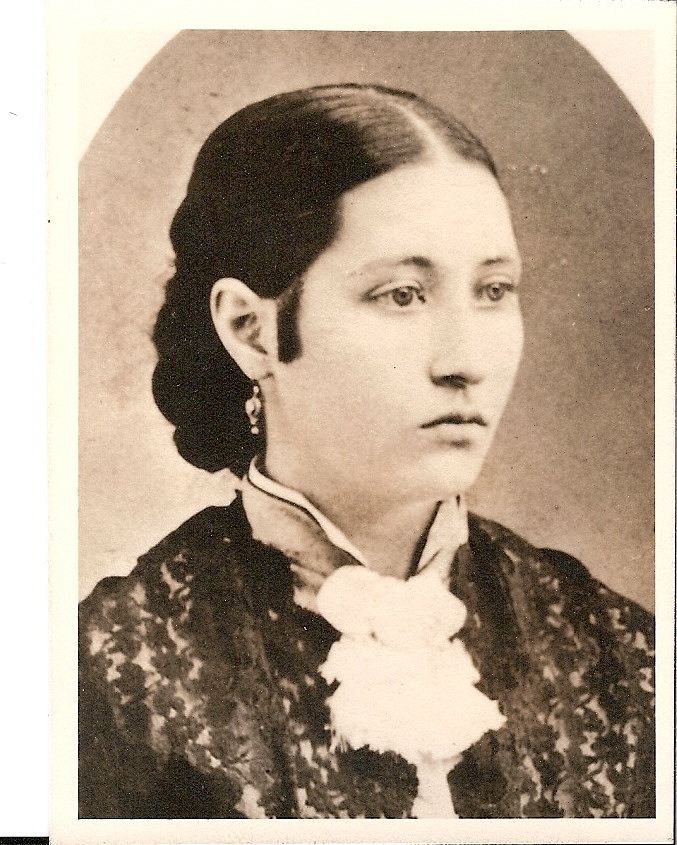
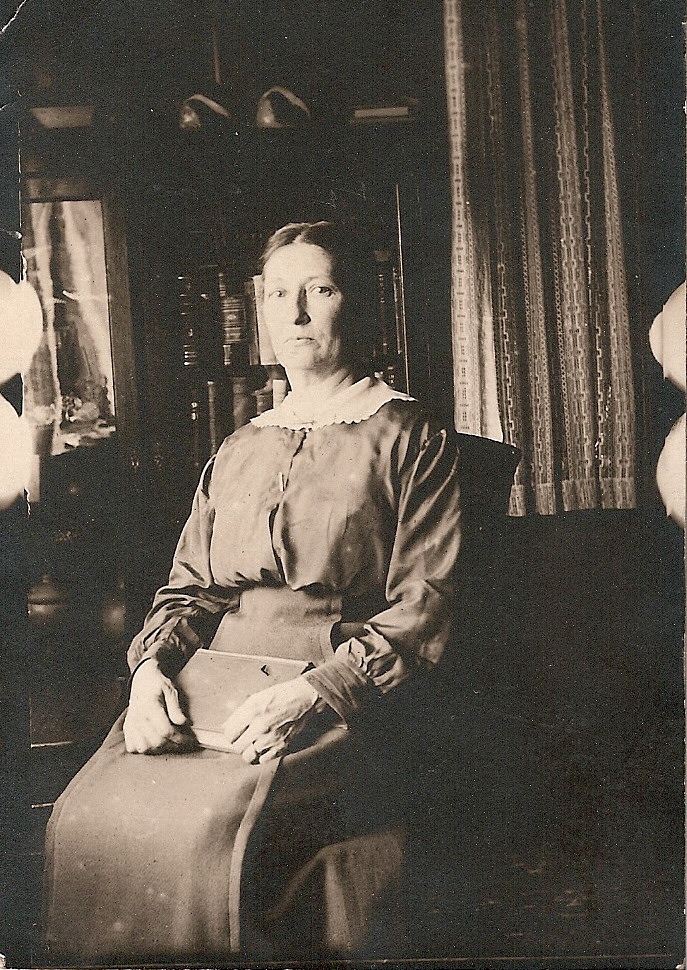
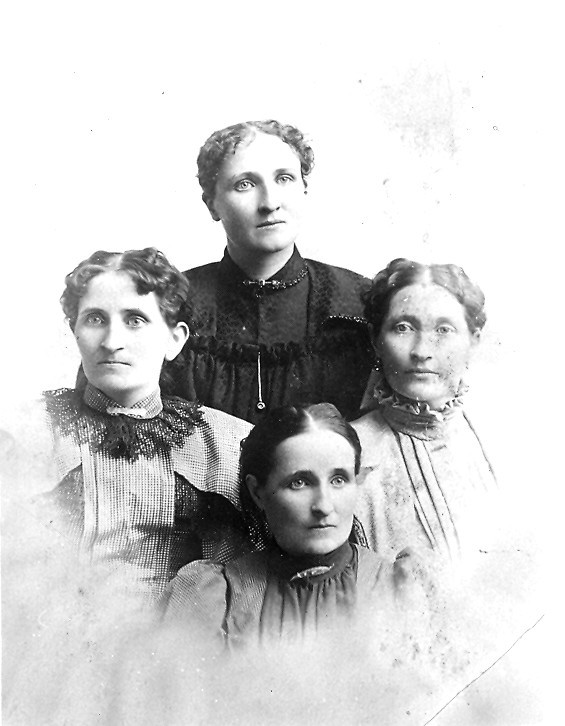
Susette is in the Center on the Right
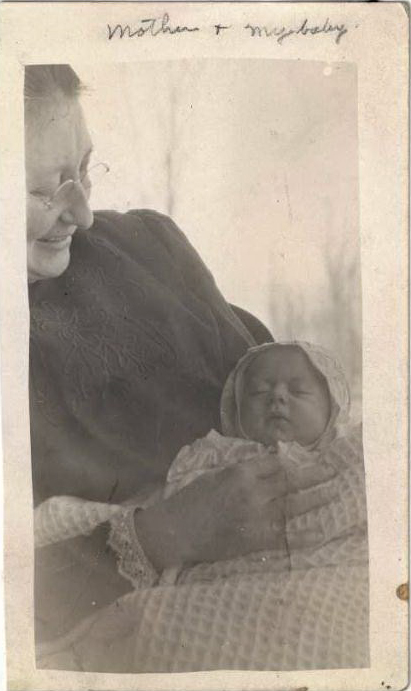
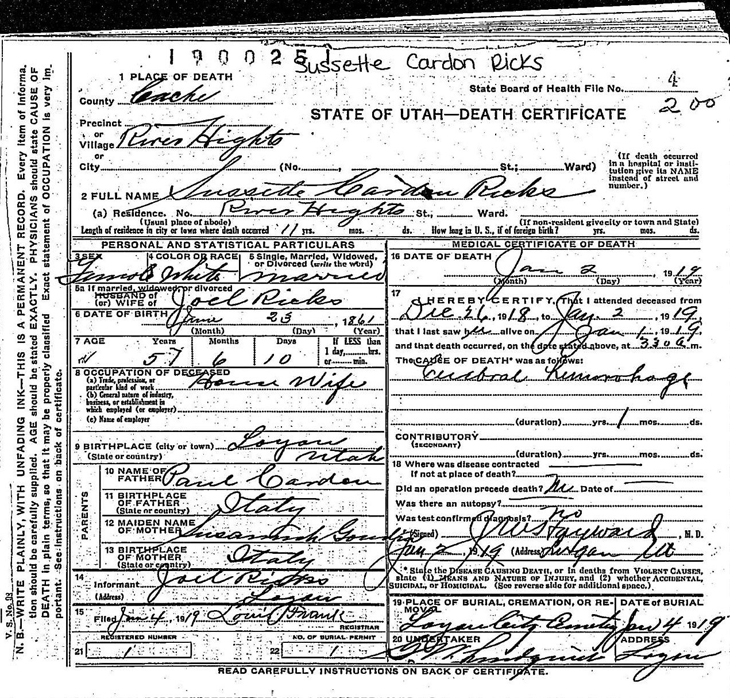
Logan City Cemetery, Logan, Utah

